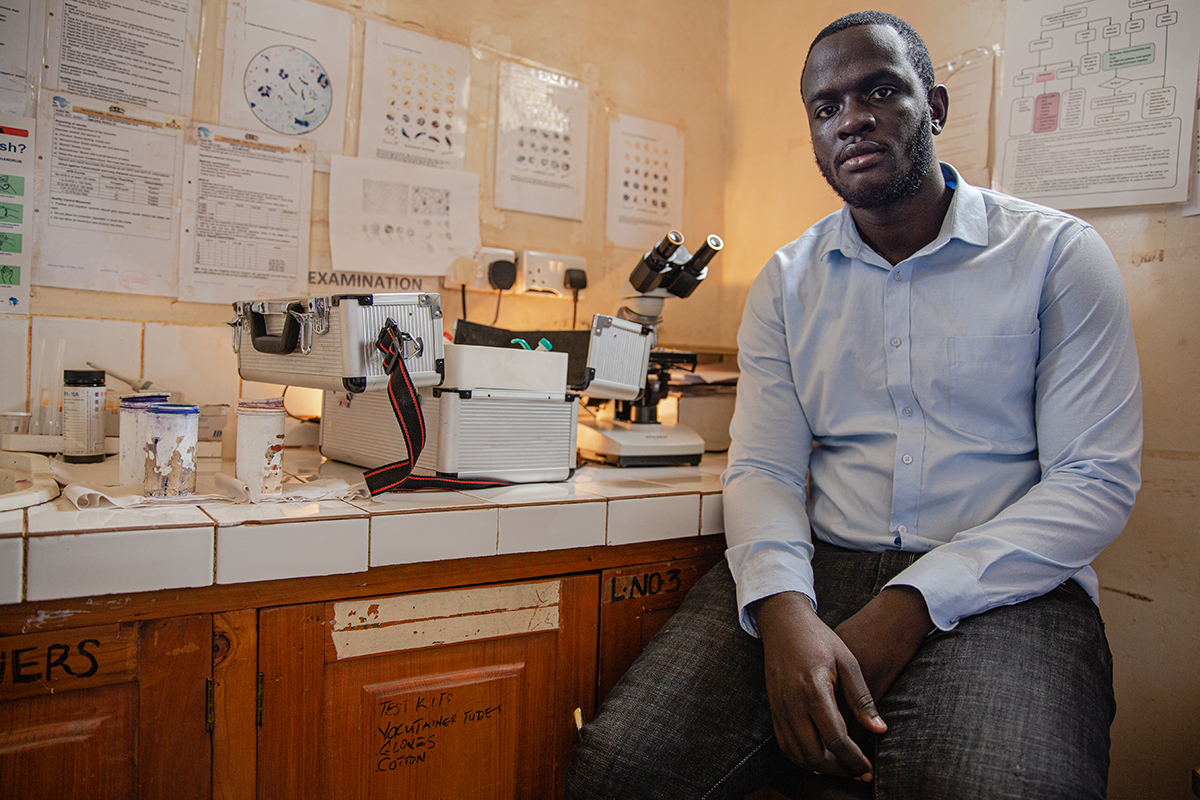Malaria causes more than 400,000 deaths every year, most of them in sub-Saharan Africa. The best way to combat the mosquito-borne parasite is through rapid and accurate diagnosis, treatment and containment. But in Uganda, where malaria is one of the leading causes of death, a good diagnosis is hard to come by. Blood tests are time-consuming, and require trained lab technicians that are not always available in the small medical clinics frequented by most of the population. After being misdiagnosed for the third time, software engineer Brian Gitta decided to do something about it. “It was such a waste of time, going to the clinic, waiting in line. I knew there had to be a better way.” So, for the past six years, the 27-year-old has worked with a team of doctors, scientists and fellow software engineers—all of them who have had their own brushes with the miserable disease—to develop a simple, low cost and quick method to test for malaria, without having to use a blood sample, a microscope or a trained technician.

All that’s needed is their new invention, a shoebox-size portable device they call a matiscope, from the Swahili word for treatment, and a smartphone. Patients with malaria-like symptoms, including high fever, chills or headaches, can place their finger in the device cradle, which uses magnets and a beam of red light to detect changes in blood cells caused by the malaria parasite. The readings are analyzed by the smartphone, diagnosed, and, if positive, can be uploaded to a national grid so that national health authorities can monitor for outbreaks. It’s reusable and provides results in 2 minutes. “This is a game changer,” says Dr. Jimmy Opigo, the manager for Uganda’s National Malaria Control Program. Not only does an accurate diagnosis mean appropriate medical prescriptions, thus avoiding overmedication that can lead to treatment resistance, the real-time outbreak–monitoring aspect could pave the way for targeted prevention campaigns. “This system could be a key part of ending malaria worldwide,” Opigo says. “I am proud it is coming from one of our own.”
Development wasn’t easy, says Gitta, a self-described workaholic who graduated from Uganda’s prestigious Makerere University with a degree in computer science. But despite several early setbacks—the first prototype was an unmitigated failure, he recalls—the team kept pursuing the idea. Now on its fifth iteration, the machine is in clinical trials in Uganda and Angola, and is showing results on par with the gold-standard blood-sample and microscope method. Gitta expects to reach market within the next two to three years. “If I had known how difficult this would be, I’m not sure I would have started down this path,” he says. But now that he is nearing the end, he has some advice for those tempted to follow in his footsteps: “It’s ok to fail, as long as you keep pushing through to your idea.”
- The 100 Most Influential People of 2024
- Coco Gauff Is Playing for Herself Now
- Scenes From Pro-Palestinian Encampments Across U.S. Universities
- 6 Compliments That Land Every Time
- If You're Dating Right Now, You're Brave: Column
- The AI That Could Heal a Divided Internet
- Fallout Is a Brilliant Model for the Future of Video Game Adaptations
- Want Weekly Recs on What to Watch, Read, and More? Sign Up for Worth Your Time